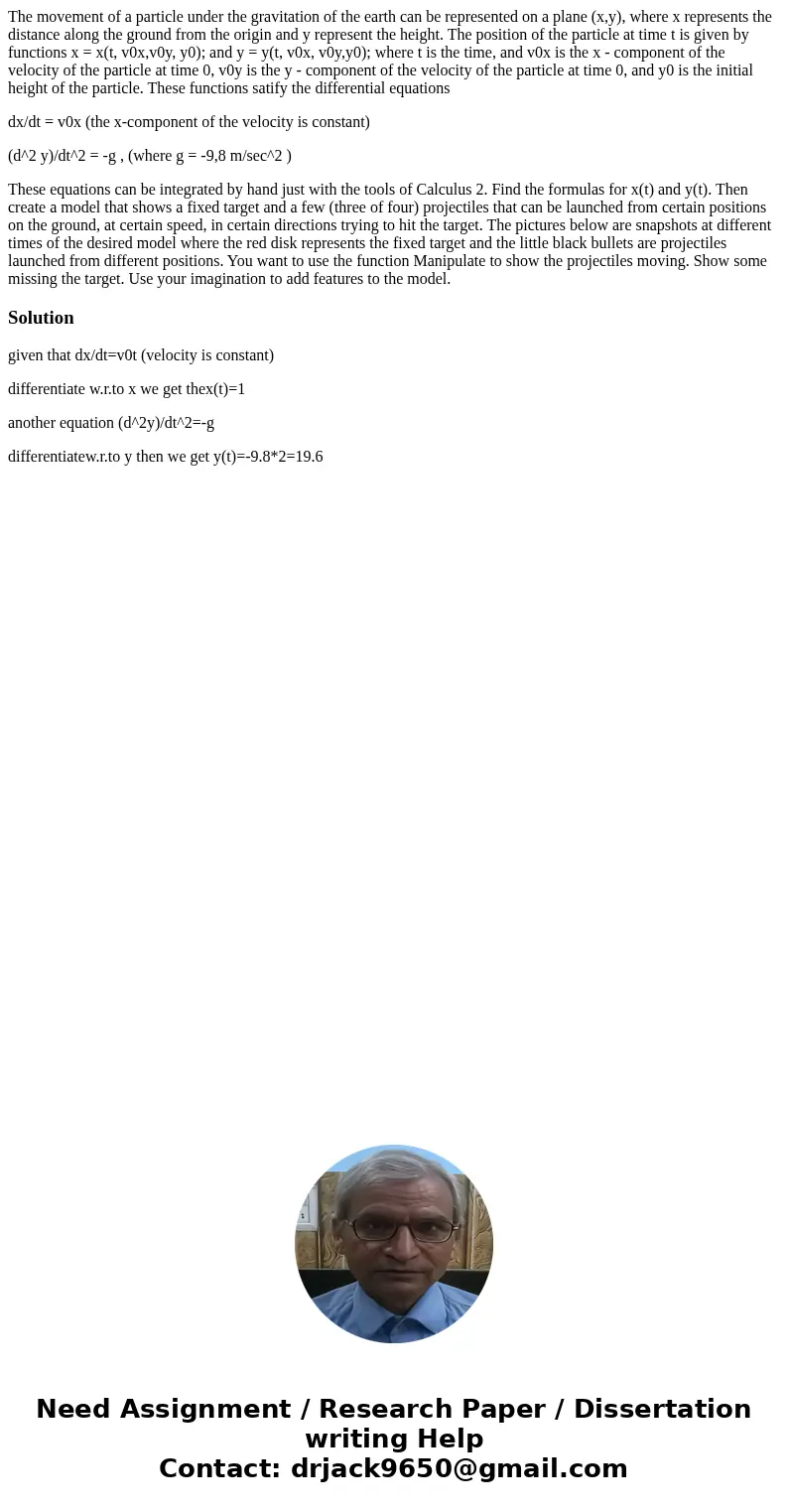The movement of a particle under the gravitation of the eart
The movement of a particle under the gravitation of the earth can be represented on a plane (x,y), where x represents the distance along the ground from the origin and y represent the height. The position of the particle at time t is given by functions x = x(t, v0x,v0y, y0); and y = y(t, v0x, v0y,y0); where t is the time, and v0x is the x - component of the velocity of the particle at time 0, v0y is the y - component of the velocity of the particle at time 0, and y0 is the initial height of the particle. These functions satify the differential equations
dx/dt = v0x (the x-component of the velocity is constant)
(d^2 y)/dt^2 = -g , (where g = -9,8 m/sec^2 )
These equations can be integrated by hand just with the tools of Calculus 2. Find the formulas for x(t) and y(t). Then create a model that shows a fixed target and a few (three of four) projectiles that can be launched from certain positions on the ground, at certain speed, in certain directions trying to hit the target. The pictures below are snapshots at different times of the desired model where the red disk represents the fixed target and the little black bullets are projectiles launched from different positions. You want to use the function Manipulate to show the projectiles moving. Show some missing the target. Use your imagination to add features to the model.
Solution
given that dx/dt=v0t (velocity is constant)
differentiate w.r.to x we get thex(t)=1
another equation (d^2y)/dt^2=-g
differentiatew.r.to y then we get y(t)=-9.8*2=19.6

 Homework Sourse
Homework Sourse